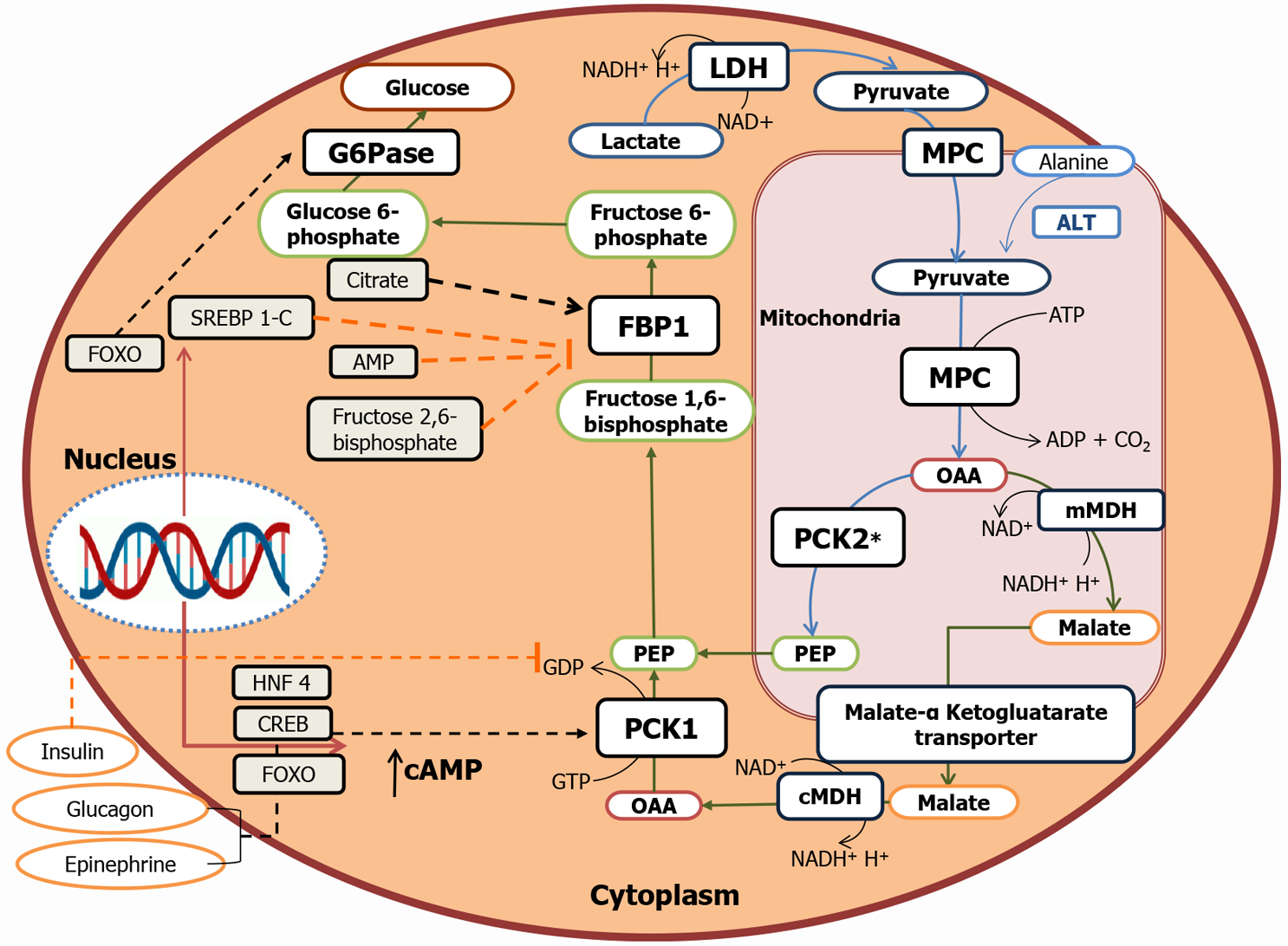Copyright
©The Author(s) 2021.
World J Diabetes. May 15, 2021; 12(5): 556-568
Published online May 15, 2021. doi: 10.4239/wjd.v12.i5.556
Published online May 15, 2021. doi: 10.4239/wjd.v12.i5.556
Figure 2 Gluconeogenesis Pathway and cellular compartmentalization of the gluconeogenic enzymes.
Pyruvate from lactate enters mitochondria by mitochondrial pyruvate transporter. Pyruvate provided by alanine transamination or lactate dehydrogenation is converted to oxaloacetate (OAA) by mitochondrial pyruvate carboxylase. OAA is either reduced to malate and exported out in the cytoplasm by malate ketoglutarate transporter or directly converted to phosphoenolpyruvate (PEP) by phosphoenolpyruvate carboxykinase (PCK) 2 (mitochondrial isoform) and exported out in the cytoplasm. In the cytoplasm, malate is first oxidized to OAA and then converted to PEP by PCK1 (cytoplasmic isoform). Fructose-1,6-bisphosphate (FBP) is then converted to fructose-6-phosphate by cytoplasmic FBP1. Glucose-6-phosphatase in the cytoplasm ultimately dephosphorylates glucose-6-phosphate to release glucose. G6Pase: Glucose-6-phosphatase; LDH: Lactate dehydrogenase; MPC: Mitochondrial pyruvate carrier; ALT: Alanine aminotransferase; FBP: Fructose-1,6-bisphosphate; OAA: Oxaloacetate; PCK: Phosphoenolpyruvate carboxykinase; PEP: Phosphoenolpyruvate; mMDH: Malate dehydrogenase; cAMP: Cyclic adenosine monophosphate.
- Citation: Sharma R, Tiwari S. Renal gluconeogenesis in insulin resistance: A culprit for hyperglycemia in diabetes. World J Diabetes 2021; 12(5): 556-568
- URL: https://www.wjgnet.com/1948-9358/full/v12/i5/556.htm
- DOI: https://dx.doi.org/10.4239/wjd.v12.i5.556









